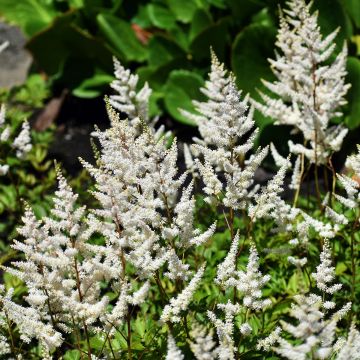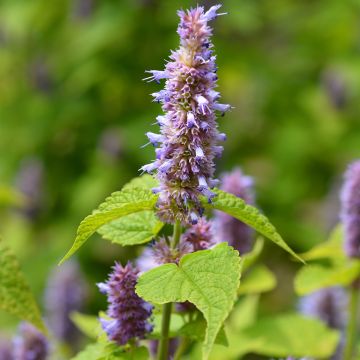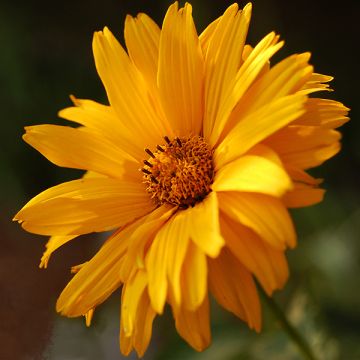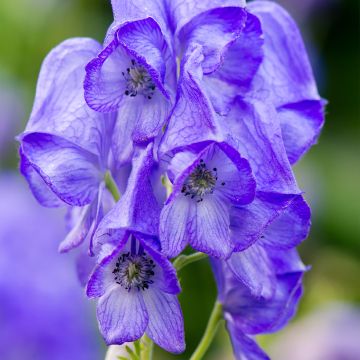

Astilbe Delft Lace - Japanese Astilbe


Astilbe Delft Lace - Japanese Astilbe
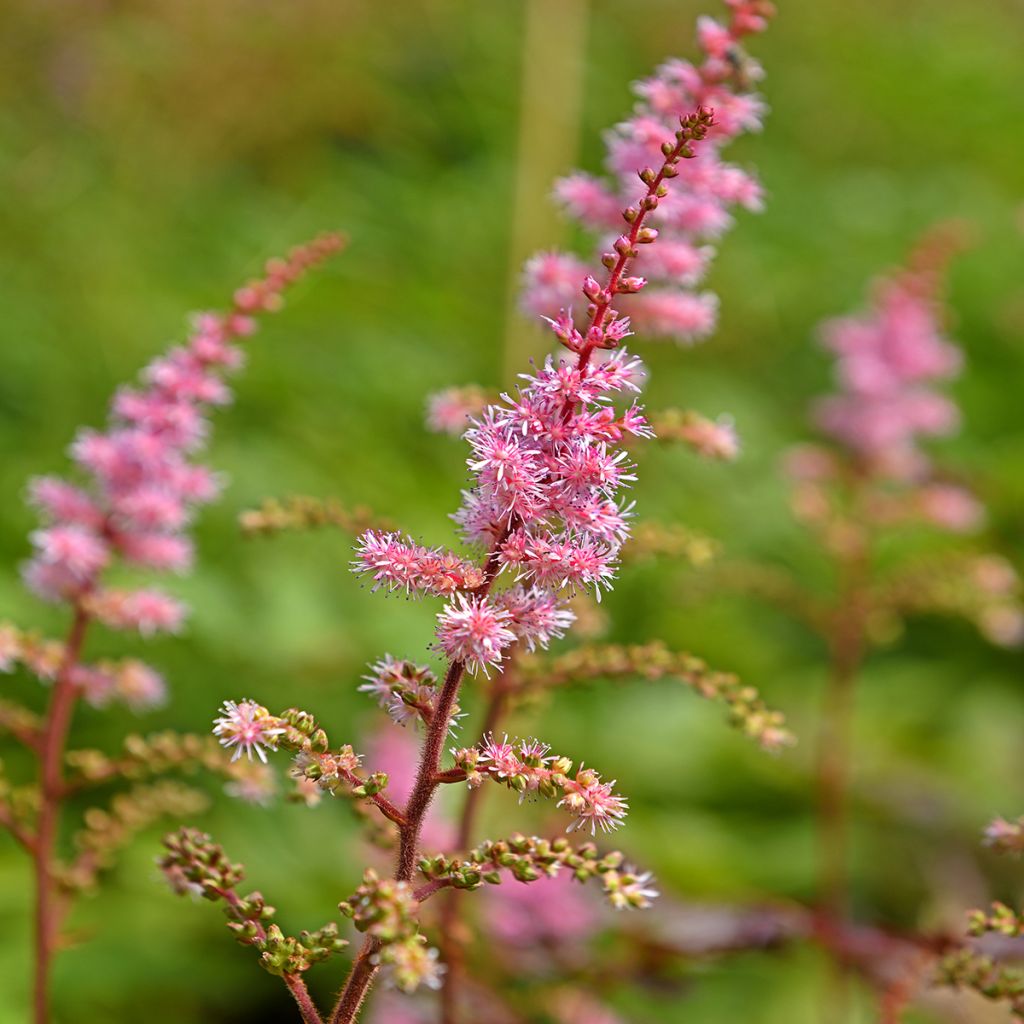

Astilbe Delft Lace - Japanese Astilbe


Astilbe Delft Lace - Japanese Astilbe


Astilbe Delft Lace - Japanese Astilbe
Astilbe Delft Lace - Japanese Astilbe
Astilbe japonica Delft Lace
Japanese Astilbe, False Goat's Beard
Pleased to have planted them.
Gé, 05/11/2025
Special offer!
Receive a €20 voucher for any order over €90 (excluding delivery costs, credit notes, and plastic-free options)!
1- Add your favorite plants to your cart.
2- Once you have reached €90, confirm your order (you can even choose the delivery date!).
3- As soon as your order is shipped, you will receive an email containing your voucher code, valid for 3 months (90 days).
Your voucher is unique and can only be used once, for any order with a minimum value of €20, excluding delivery costs.
Can be combined with other current offers, non-divisible and non-refundable.
Home or relay delivery (depending on size and destination)
Schedule delivery date,
and select date in basket
This plant carries a 12 months recovery warranty
More information
We guarantee the quality of our plants for a full growing cycle, and will replace at our expense any plant that fails to recover under normal climatic and planting conditions.
Would this plant suit my garden?
Set up your Plantfit profile →
Description
Astilbe japonica 'Delft Lace' is a beautiful new variety of Japanese Astilbe which combines many qualities: it has a compact habit like Astilbe 'Vision' and the delightful flowering in shades of deep pink to soft apricot pink of the cultivar 'Peach Blossom'. Carried by superb red stems emerging from a bluish fern-like foliage with red highlights, its feathery inflorescences appear from the beginning of summer. For 6 to 8 weeks its flowers and foliage create a remarkable symphony of colours with a highlight of beautiful autumn foliage topped with caramel flowers. This perennial excels near water features and in shady areas, but also in large containers kept moist on the terrace or balcony.
Astilbe is a long-lived plant of the saxifrage family. 'Delft Lace' is a very recent hybrid derived from the species Astilbe japonica, native to the Japanese archipelago.
'Delft Lace' is a rhizomatous perennial plant, with a low and compact habit from spring onwards. It will reach about 60-70 cm (24-28in) high when in flower, and spread over 40 to 50 cm (16 to 20in). Its dense and abundant foliage, which disappears in winter, is composed of strongly divided, shiny leaves with toothed leaflets, whose colour changes throughout the seasons. The young silver shoots unfold into olive green leaves with icy blue or reddish highlights, before turning to red-orange in autumn. The more the plant is exposed to the sun, the more pronounced its colours will be.
Flowering begins in June and continues until August in average climates. Intensely red flower stalks emerge from the foliage clump and bear branched, feathery plume-like panicles, where a multitude of tiny flowers are tightly packed. They are deep pink when in bud, which gradually lightens as they open to pale pink and peach-pink towards the end of flowering. The faded flowers take on a lovely caramel hue and remain decorative for a long time in winter on the dry plant.
Astilbe Delft Lace, with its modest size, graceful appearance and delightful flowering, is often placed at the edge of borders with its lovely shade companions, ferns and Hostas. It will also thrive in a large pot kept moist on the terrace or balcony. Its panicles in shades of pink and its astonishing foliage, bring a touch of charm to woodland and enhance white, blue, or pink Hydrangeas planted along north-east-facing facades. It provides a unique charm to the surroundings of water features, which serve as a mirror. Laid out in ribbon-like fashion, Astilbes highlight shaded pathways along with Liriope muscari and saxifrages. Their fern-like foliage contrasts beautifully with that of opulent neighbours such as rhubarb, while their flowering blends perfectly with Persicaria amplexicaulis, for example. Astilbes can tolerate exposure to filtered sunlight and require consistently moist soil. They are hardy and robust and require very little maintenance. Create a superb border by choosing plants from our selection of moist soil perennials.
Report an error about the product description
Astilbe Delft Lace - Japanese Astilbe in pictures


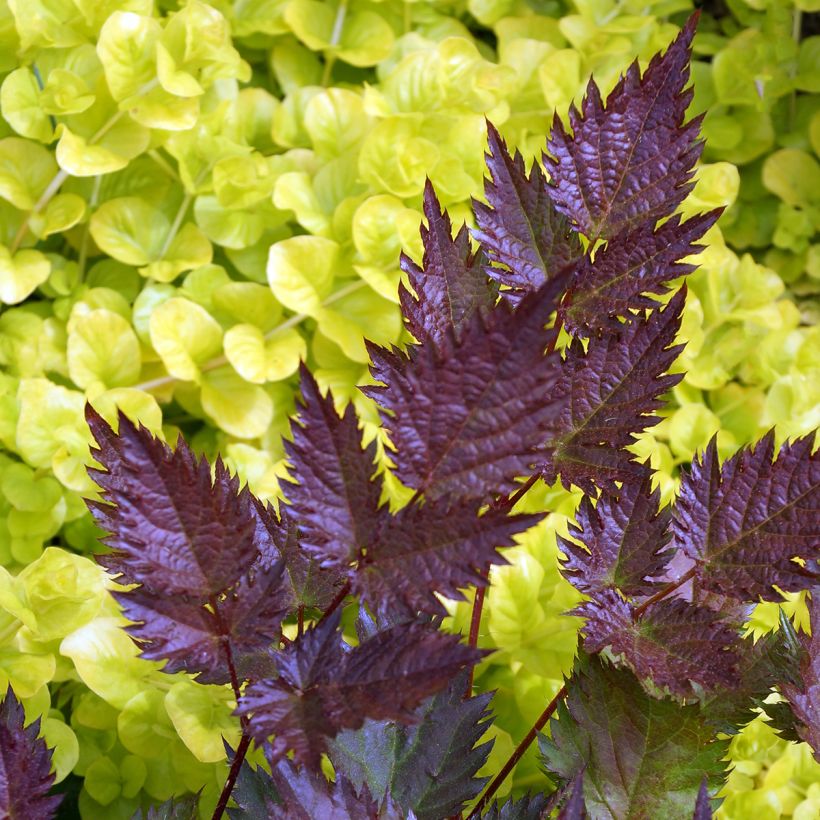



Flowering
Foliage
Plant habit
Botanical data
Astilbe
japonica
Delft Lace
Saxifragaceae
Japanese Astilbe, False Goat's Beard
Cultivar or hybrid
Other Astilbe - False Goatsbeard
View all →Planting and care
Astilbe 'Delft Lace' thrives best in partial shade. You can place it in mild sunlight, but avoid the hot midday hours. It is problem-free as long as the soil remains moist. Plant it in spring or autumn in moist, well-drained soil, rich in organic matter. It prefers fertile soils. You can plant it in a marshy area but not in excessively chalky soil.
To plant your astilbe, work the soil to a depth of 20 cm (8in), breaking it up well and adding a base fertiliser such as bonemeal at the bottom of the planting hole. Remove your plant from its pot and position, covering the top of the root ball with 3 cm (1in) of soil. Then fill in and water generously to eliminate air pockets. During dry weather, water regularly for a few weeks to aid rooting. Astilbe requires very little maintenance. Keep the soil moist and add compost and fertiliser in spring. In winter, be careful of the flowers and young leaves that can be damaged by spring frosts. After flowering, cut the flower stems to highlight the foliage. In November, cut back the plants to about 10 cm (4in). Avoid digging near these plants, as the rootstocks develop near the surface. These plants are disease-resistant and rarely attacked by insects. While ignored by slugs, they can be susceptible to powdery mildew and fungal spots.
Planting period
Intended location
Care
-
, onOrder confirmed
Reply from on Promesse de fleurs
Similar products
Haven't found what you were looking for?
Hardiness is the lowest winter temperature a plant can endure without suffering serious damage or even dying. However, hardiness is affected by location (a sheltered area, such as a patio), protection (winter cover) and soil type (hardiness is improved by well-drained soil).

Photo Sharing Terms & Conditions
In order to encourage gardeners to interact and share their experiences, Promesse de fleurs offers various media enabling content to be uploaded onto its Site - in particular via the ‘Photo sharing’ module.
The User agrees to refrain from:
- Posting any content that is illegal, prejudicial, insulting, racist, inciteful to hatred, revisionist, contrary to public decency, that infringes on privacy or on the privacy rights of third parties, in particular the publicity rights of persons and goods, intellectual property rights, or the right to privacy.
- Submitting content on behalf of a third party;
- Impersonate the identity of a third party and/or publish any personal information about a third party;
In general, the User undertakes to refrain from any unethical behaviour.
All Content (in particular text, comments, files, images, photos, videos, creative works, etc.), which may be subject to property or intellectual property rights, image or other private rights, shall remain the property of the User, subject to the limited rights granted by the terms of the licence granted by Promesse de fleurs as stated below. Users are at liberty to publish or not to publish such Content on the Site, notably via the ‘Photo Sharing’ facility, and accept that this Content shall be made public and freely accessible, notably on the Internet.
Users further acknowledge, undertake to have ,and guarantee that they hold all necessary rights and permissions to publish such material on the Site, in particular with regard to the legislation in force pertaining to any privacy, property, intellectual property, image, or contractual rights, or rights of any other nature. By publishing such Content on the Site, Users acknowledge accepting full liability as publishers of the Content within the meaning of the law, and grant Promesse de fleurs, free of charge, an inclusive, worldwide licence for the said Content for the entire duration of its publication, including all reproduction, representation, up/downloading, displaying, performing, transmission, and storage rights.
Users also grant permission for their name to be linked to the Content and accept that this link may not always be made available.
By engaging in posting material, Users consent to their Content becoming automatically accessible on the Internet, in particular on other sites and/or blogs and/or web pages of the Promesse de fleurs site, including in particular social pages and the Promesse de fleurs catalogue.
Users may secure the removal of entrusted content free of charge by issuing a simple request via our contact form.
The flowering period indicated on our website applies to countries and regions located in USDA zone 8 (France, the United Kingdom, Ireland, the Netherlands, etc.)
It will vary according to where you live:
- In zones 9 to 10 (Italy, Spain, Greece, etc.), flowering will occur about 2 to 4 weeks earlier.
- In zones 6 to 7 (Germany, Poland, Slovenia, and lower mountainous regions), flowering will be delayed by 2 to 3 weeks.
- In zone 5 (Central Europe, Scandinavia), blooming will be delayed by 3 to 5 weeks.
In temperate climates, pruning of spring-flowering shrubs (forsythia, spireas, etc.) should be done just after flowering.
Pruning of summer-flowering shrubs (Indian Lilac, Perovskia, etc.) can be done in winter or spring.
In cold regions as well as with frost-sensitive plants, avoid pruning too early when severe frosts may still occur.
The planting period indicated on our website applies to countries and regions located in USDA zone 8 (France, United Kingdom, Ireland, Netherlands).
It will vary according to where you live:
- In Mediterranean zones (Marseille, Madrid, Milan, etc.), autumn and winter are the best planting periods.
- In continental zones (Strasbourg, Munich, Vienna, etc.), delay planting by 2 to 3 weeks in spring and bring it forward by 2 to 4 weeks in autumn.
- In mountainous regions (the Alps, Pyrenees, Carpathians, etc.), it is best to plant in late spring (May-June) or late summer (August-September).
The harvesting period indicated on our website applies to countries and regions in USDA zone 8 (France, England, Ireland, the Netherlands).
In colder areas (Scandinavia, Poland, Austria...) fruit and vegetable harvests are likely to be delayed by 3-4 weeks.
In warmer areas (Italy, Spain, Greece, etc.), harvesting will probably take place earlier, depending on weather conditions.
The sowing periods indicated on our website apply to countries and regions within USDA Zone 8 (France, UK, Ireland, Netherlands).
In colder areas (Scandinavia, Poland, Austria...), delay any outdoor sowing by 3-4 weeks, or sow under glass.
In warmer climes (Italy, Spain, Greece, etc.), bring outdoor sowing forward by a few weeks.



































